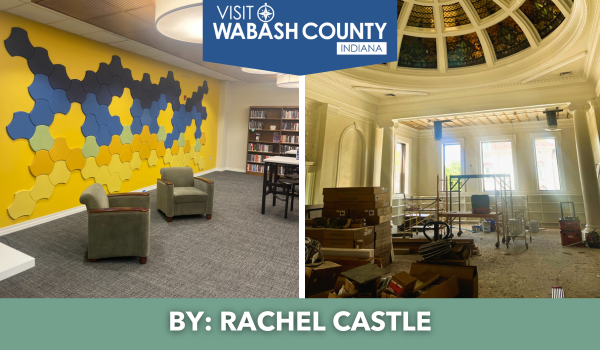The History of Paradise Spring Historical Park

Cabins, walking paths, human history, and open greenspace await visitors to Paradise Spring Historical Park. Located within a few blocks from the historic downtown district, Paradise Spring offers a peaceful connection to nature and history.
The park is an important connection between the community, cultural resources, and landscape. Layers of human history and land are evident through the storied log cabins standing watch over the historic grounds. The scenic public park is enjoyed by thousands of visitors each year during annual festivals and cultural events.
In 1826, the U.S. Congress initiated treaty negotiations with the local Native American Miami and Potawatomie tribes to acquire land that would open up the northern part of the state as well as Michigan to white settlers. The Paradise Spring site was selected for its expansive open space next to the Wabash River and for a flowing well the Natives referred to as Kincomiong Spring: or “Running Water Place”. Ten structures were built at the site to host soldiers and upwards of 2000 Indians. The Native American Indians signed a treaty relinquishing all rights to their land, which consisted of approximately 500,000-700,000 acres. White settlements started soon after the signing of the treaty, followed by the construction of the Wabash and Erie Canal.
In 1872 a train depot was located at the Paradise Spring site. The flowing natural spring supplied drinking water to the fountains inside of the depot where the Cleveland, Chicago, Cincinnati, and St. Louis railroad, also known as The Big Four, operated. The flow of the spring has long since stopped and a historical stone marker made of Indiana Limestone takes its place.
The park’s site, which adjoins the banks of the Wabash River, has made it a popular site for many activities over the years. During the early 1900s, the Wabash River was rich with many species of mussels. Mussel shells were harvested and used for food, tool making, and buttons. Shanties populated the area, and barges were constructed on the river to make harvesting easier. Mussels and shells were sold to local restaurants and a button factory. Some species of mussels were known to contain a pearl. Hundreds of people in search of easy riches could be found camping or living at the park. With the development of plastic after WWII, mussel harvesting diminished since the polymer was much more affordable and tougher than the shells of freshwater mussels.
Paradise Spring Historical Park remains a constant in the lives of many people, as evidenced by its past and current uses. Thousands visit the park each year to enjoy festivals, The Herb Fest, Old Boys Toys, Walk for Life, or the annual Wabash Cannonball Chili for Charity event claimed to be the largest chili cook-off east of the Mississippi River.
Modern restrooms, a picnic shelter, and adjoining parking lots are available for the many walkers, joggers, and families that visit daily to experience what the park name implies, paradise at the edge of the city.
The Paradise Spring site enriches people’s lives with its simplicity. To conservationists, it is a park that is protected for future generations.
Want to hear more on Paradise Spring? Check out this podcast by Wabash’s very own podcaster – Shane Waters



